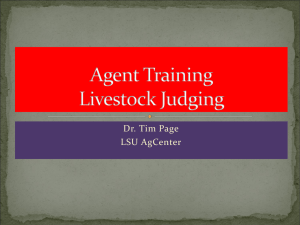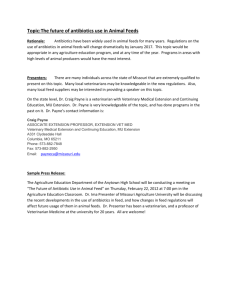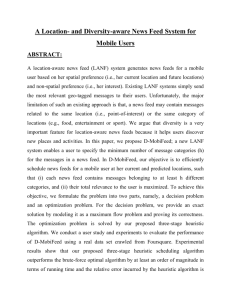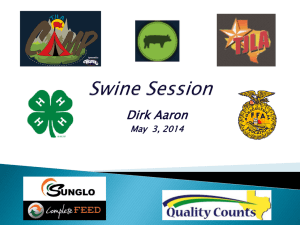2014 SAREC Report - Sustainable Agriculture Research and
advertisement
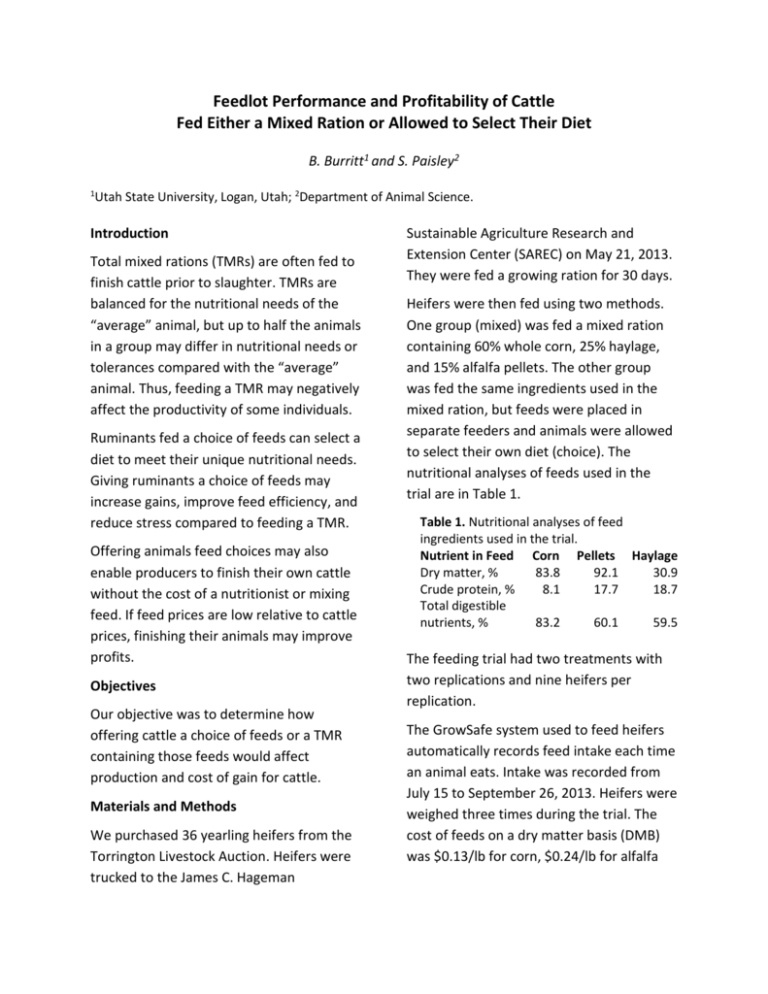
Feedlot Performance and Profitability of Cattle Fed Either a Mixed Ration or Allowed to Select Their Diet B. Burritt1 and S. Paisley2 1 Utah State University, Logan, Utah; 2Department of Animal Science. Introduction Total mixed rations (TMRs) are often fed to finish cattle prior to slaughter. TMRs are balanced for the nutritional needs of the “average” animal, but up to half the animals in a group may differ in nutritional needs or tolerances compared with the “average” animal. Thus, feeding a TMR may negatively affect the productivity of some individuals. Ruminants fed a choice of feeds can select a diet to meet their unique nutritional needs. Giving ruminants a choice of feeds may increase gains, improve feed efficiency, and reduce stress compared to feeding a TMR. Offering animals feed choices may also enable producers to finish their own cattle without the cost of a nutritionist or mixing feed. If feed prices are low relative to cattle prices, finishing their animals may improve profits. Objectives Our objective was to determine how offering cattle a choice of feeds or a TMR containing those feeds would affect production and cost of gain for cattle. Materials and Methods We purchased 36 yearling heifers from the Torrington Livestock Auction. Heifers were trucked to the James C. Hageman Sustainable Agriculture Research and Extension Center (SAREC) on May 21, 2013. They were fed a growing ration for 30 days. Heifers were then fed using two methods. One group (mixed) was fed a mixed ration containing 60% whole corn, 25% haylage, and 15% alfalfa pellets. The other group was fed the same ingredients used in the mixed ration, but feeds were placed in separate feeders and animals were allowed to select their own diet (choice). The nutritional analyses of feeds used in the trial are in Table 1. Table 1. Nutritional analyses of feed ingredients used in the trial. Nutrient in Feed Corn Pellets Haylage Dry matter, % 83.8 92.1 30.9 Crude protein, % 8.1 17.7 18.7 Total digestible nutrients, % 83.2 60.1 59.5 The feeding trial had two treatments with two replications and nine heifers per replication. The GrowSafe system used to feed heifers automatically records feed intake each time an animal eats. Intake was recorded from July 15 to September 26, 2013. Heifers were weighed three times during the trial. The cost of feeds on a dry matter basis (DMB) was $0.13/lb for corn, $0.24/lb for alfalfa pellets, and $0.16/lb for haylage. Thus, roughages were more expensive than corn. Offering cattle a choice of feeds is a viable method to finish cattle. After September 26, 2013, heifers were removed from the GrowSafe, housed in two pens, and fed using the same method (mixed or choice) as in the feeding trial. On December 19, they were weighed and sold for slaughter. Acknowledgments Results and Discussion Contact Information No differences were detected between treatments for feed intake, body weight, average daily gain, feed efficiency, or cost of gain (Table 2). Table 3 shows the variation in intake of heifers given a choice of feeds. Average feed intake on a DMB for choice group was 69% corn, 26.9% alfalfa pellets, and 4.1% haylage. Feed intake on a DMB for the mixed diet was 70% corn, 19.2% alfalfa pellets, and 10.8% haylage. Intake of corn was similar between the two treatments. Heifers in the choice group preferred alfalfa pellets to haylage probably because pellets have higher rates of intake than haylage. Quality and yield grades were similar between treatments (data not shown). Beth Burritt at beth.burritt@usu.edu or 435-245-4736. Heifers offered choice or a mixed ration had similar performance and cost of gain. Even though heifers had free access to corn, they did not suffer from bloat or acidosis. Table 2. Productivity of heifers offered a choice of feed ingredients or a mixed ration. Production Variable Choice Mixed Average daily intake (Ib/d) 21.7 21.4 Body weight (lb) 1,186 1,188 Average daily gain (lb/d) 2.6 2.6 Feed efficiency 8.4 8.5 Cost per pound of gain ($/lb) $1.35 $1.32 We thank the SAREC crew for care and feeding of trial heifers. The study was supported by a grant from Western Sustainable Agriculture Research and Education. Key words: cattle, feedlot, choice PARP: I:1, V:1,5,7, VI:1, VII:6, IX:1 Table 3. Variation in heifer intake of different feeds offered in two different pens. Alfalfa Corn Haylage Pen1 Pellets (%) (%) (%) 465 39.7 56.5 3.7 538 32.1 65.7 2.2 544 26.3 71.9 1.8 547 26.4 66.0 7.6 548 26.2 71.0 2.8 552 31.2 64.8 4.0 553 30.8 67.4 1.8 555 40.7 56.9 2.4 560 33.6 61.8 4.6 Pen 2 469 22.2 72.5 5.2 540 26.8 67.8 5.4 542 20.7 77.7 1.6 546 20.4 74.6 5.0 551 26.4 70.2 3.5 554 23.1 71.0 5.9 556 13.8 81.0 5.2 559 18.9 76.6 4.5 561 24.5 69.1 6.4

